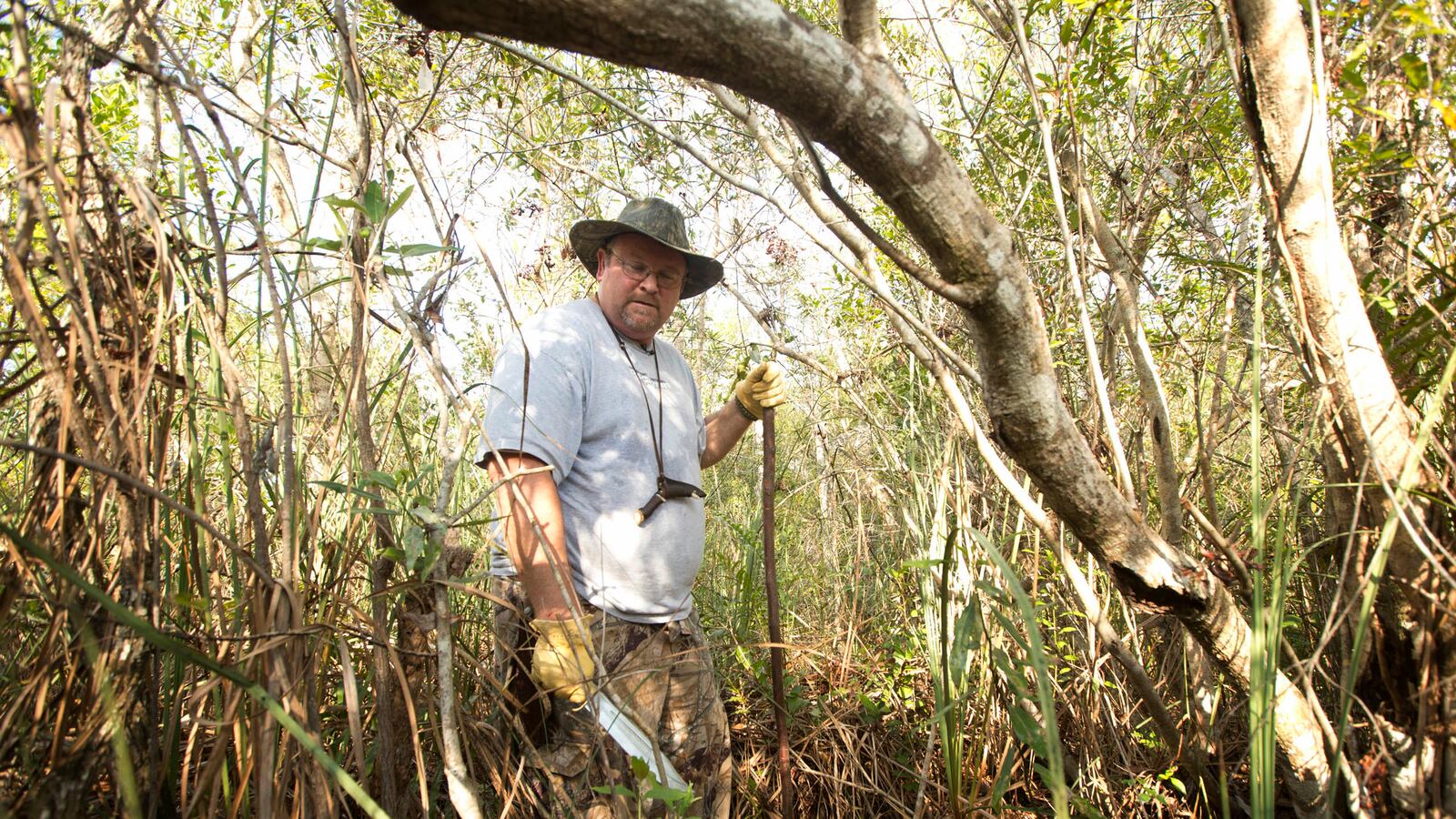Eleven down. 149,989 to go.

That’s how many Burmese pythons have been killed or captured in the Florida Everglades—and how many might still be on the loose—since the state kicked off its first-ever Python Challenge on Saturday. The goal is to reduce or wipe out altogether these invasive snakes, which can grow up to 26 feet long and have been gobbling up every rabbit, raccoon and random, tasty mammal in sight.
But hunting snakes ain’t easy.
“It’s not like they’re hanging off of every tree,” says Allen Schneider, one of 800 people, many from across the country, competing in the month-long challenge. Even Florida’s local politicians are getting in on the action. Senator Bill Nelson—famous for bringing the skin of a 16 foot python to a congressional meeting—has said he’ll join in on the hunt during the competition. Schneider, who is already a licensed python hunter in Florida, as well as a “nuisance wildlife trapper,” says that “in reality, it’s mostly a lot of walking, and a lot of looking.”
Once you do find a python, you can shoot it, knife it to death, or capture it with a “snake stick,” essentially a rod with a hook on the end.
Aside from love of the sport, hunters are being lured by the hefty cash prizes: $1,500 for the person who snags the most pythons, and $1,000 for the longest catch.
Native to Southeast Asia, the snakes ended up in the Sunshine State after they were bred as exotic pets in the 1970s and ‘80s. They adapted aggressively to the Everglades’ balmy temperatures and swampy environs. Schneider, his 12-year-old son, and some fellow hunters have spent the past few days in the Everglades, scanning the ground for any sign of a python. “One day we went out for 12 hours and found nothing,” he says, “the next day we went out again for 12 hours and the only thing we found was a desiccated python carcass. We covered over 30 miles in three days and 50 miles by boat.” “For most people it gets pretty boring,” Schneider says.
And when there is the rare python spotting, proceed with caution. “If you don’t know what you’re doing, you could mistake it for another kind of snake with different markings,” he says. “Then you want to figure out where the head is; I work the snake a little bit, I pull on its tail and let it run away from me and pull it back until it gets tired out. That’s when I usually euthanize it.” For small pythons, Schneider will often strike the critter with a snake stick, then double-bag it in a pillowcase, put it in a storage container, and turn it over to the Fish and Wildlife Commission for research purposes.
Some worry the Python Challenge could backfire.
Scott Wisneski, the co-owner of FamilyReptiles.com, a ball python breeding company in Central Florida, says he’s worried that people with no reptile experience may be more likely to get hurt than to hurt an actual snake.
“It’s like saying, ‘it’s open season! Get your pitchfork and your torches and go get them!’”






